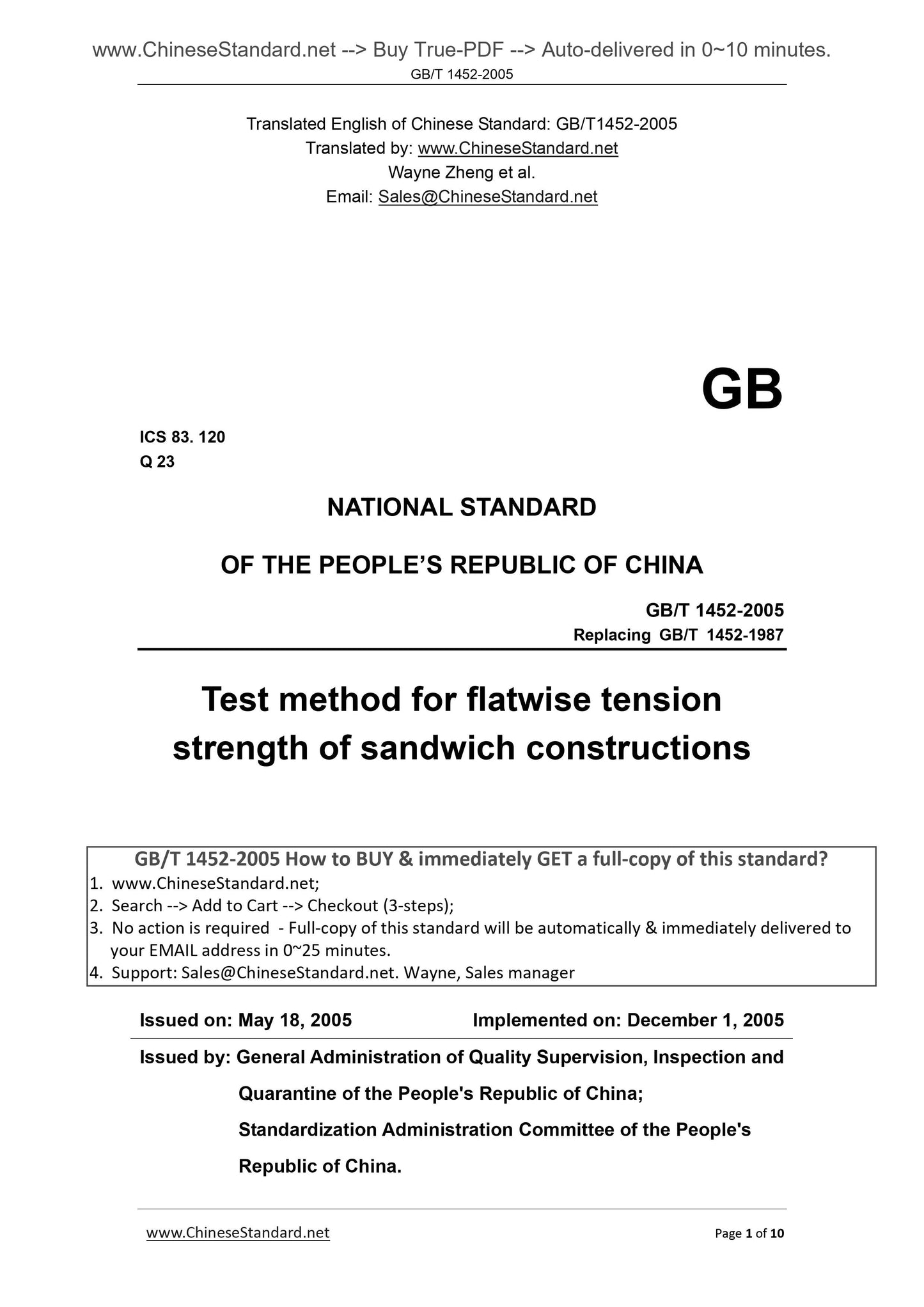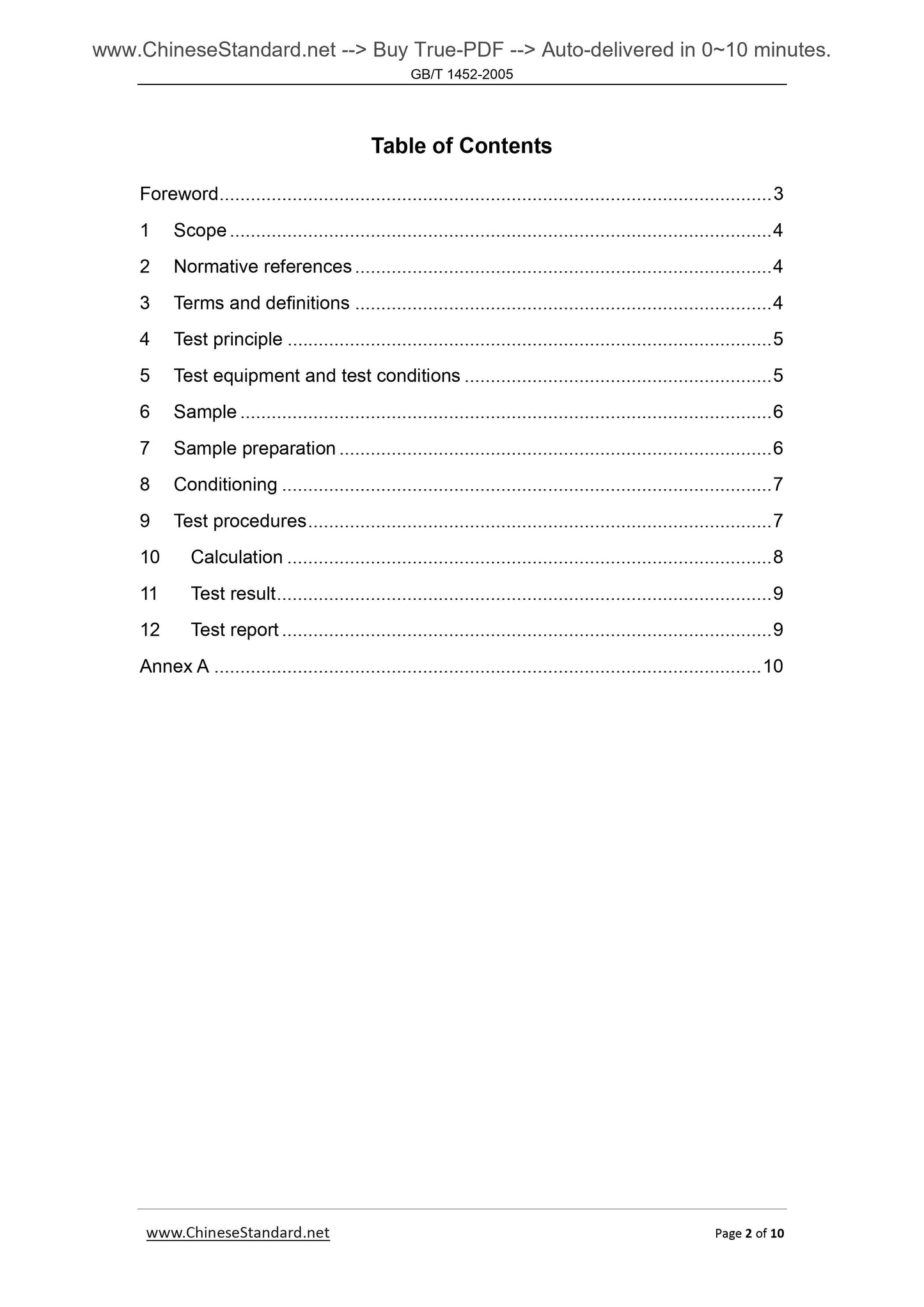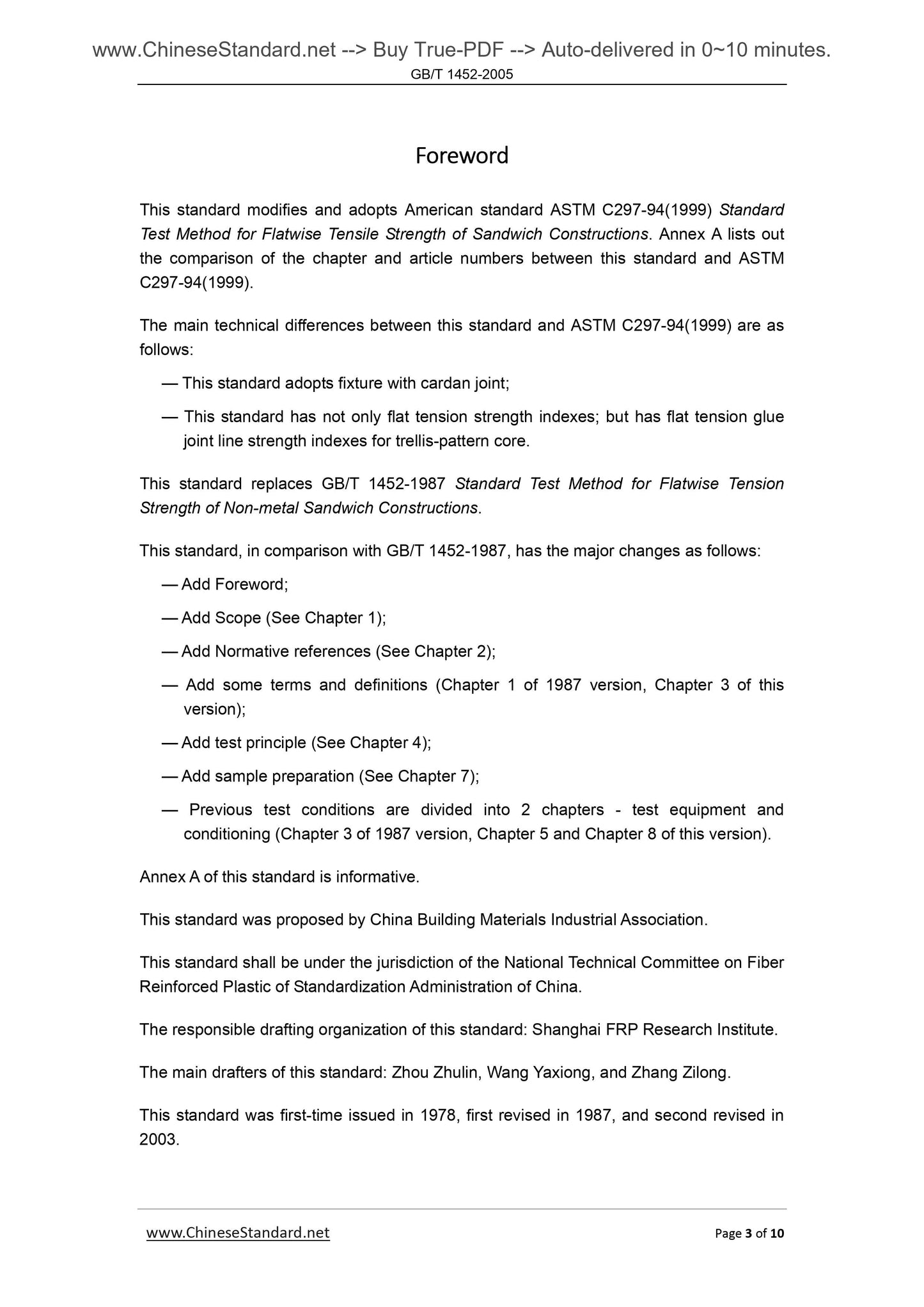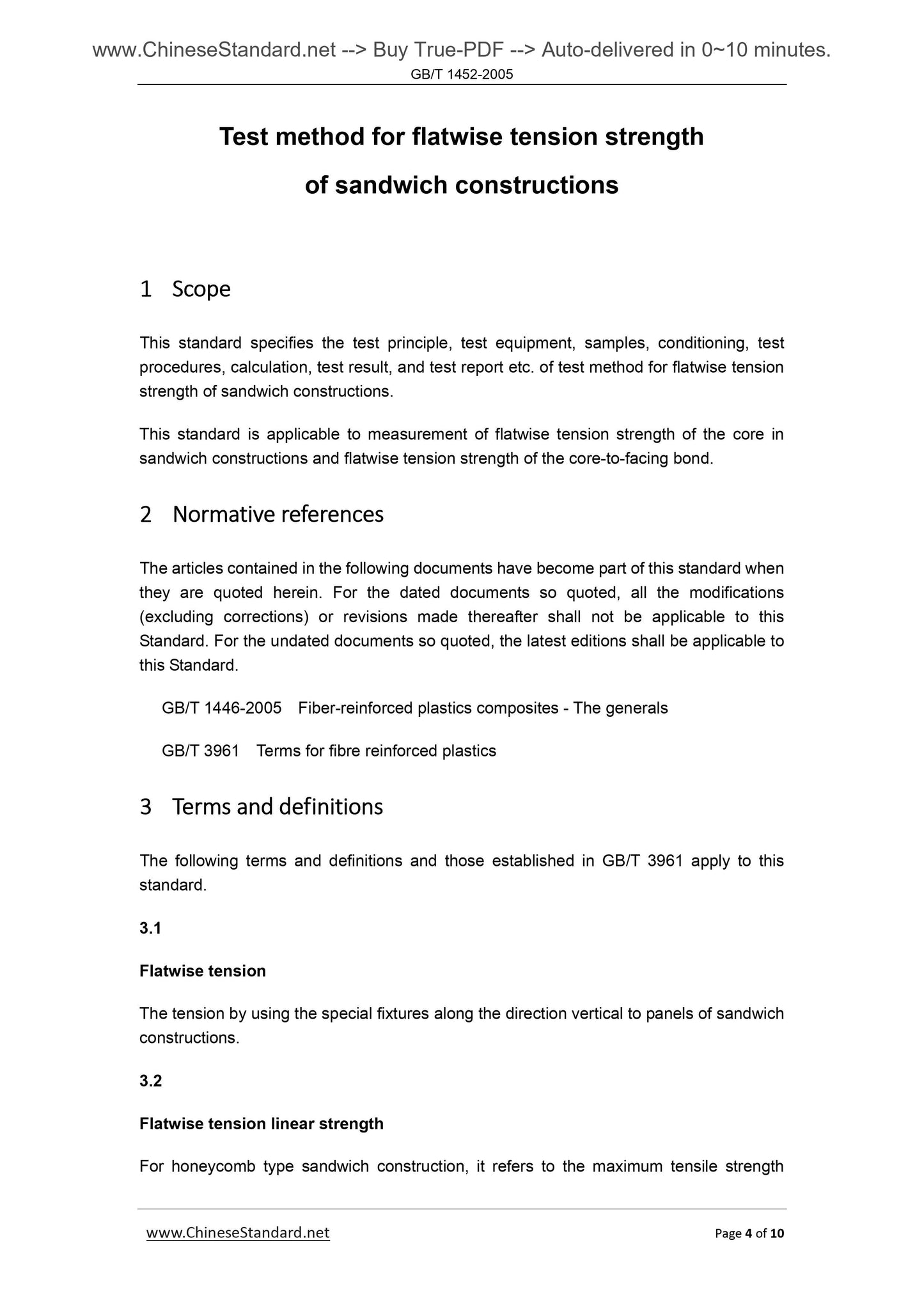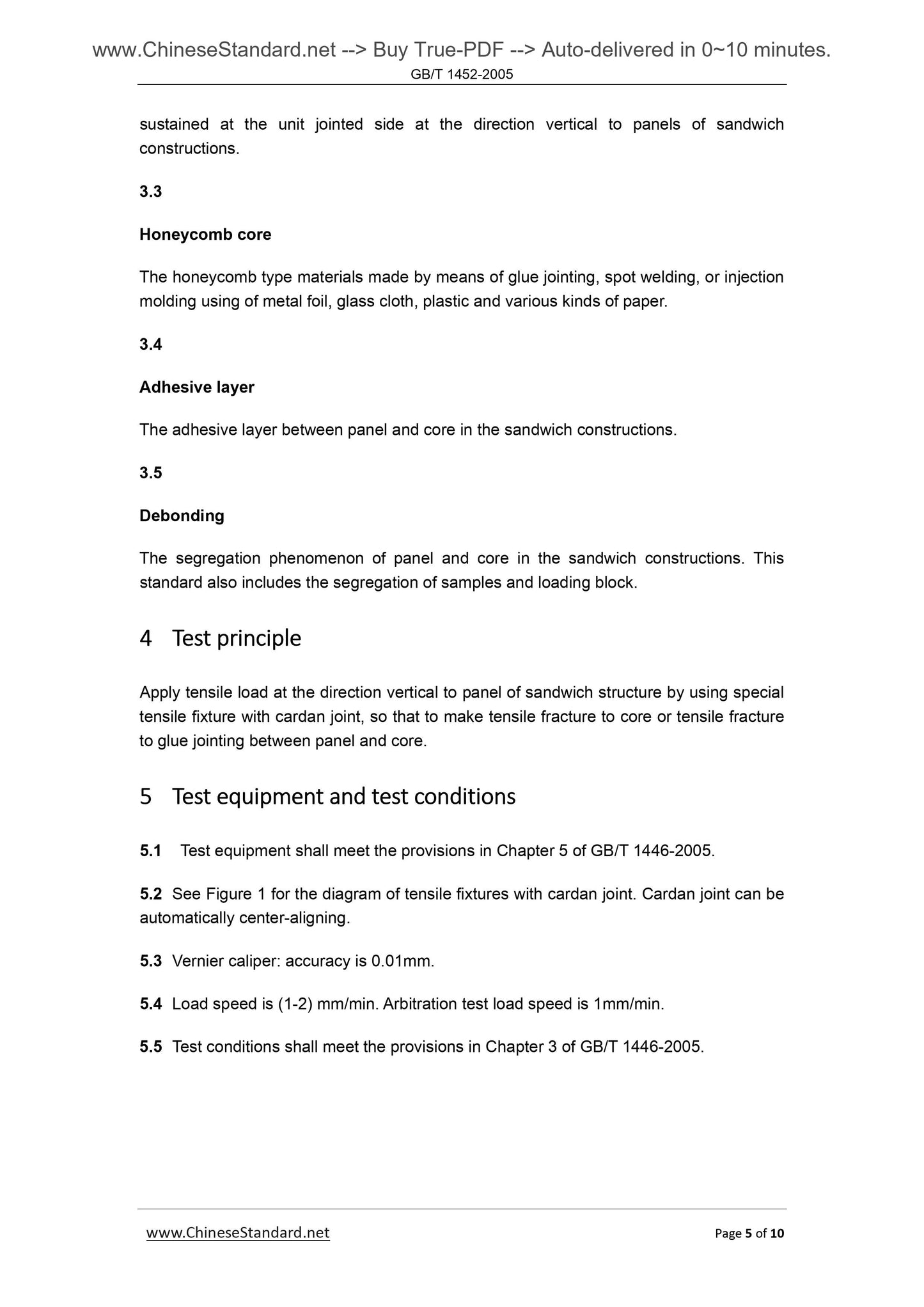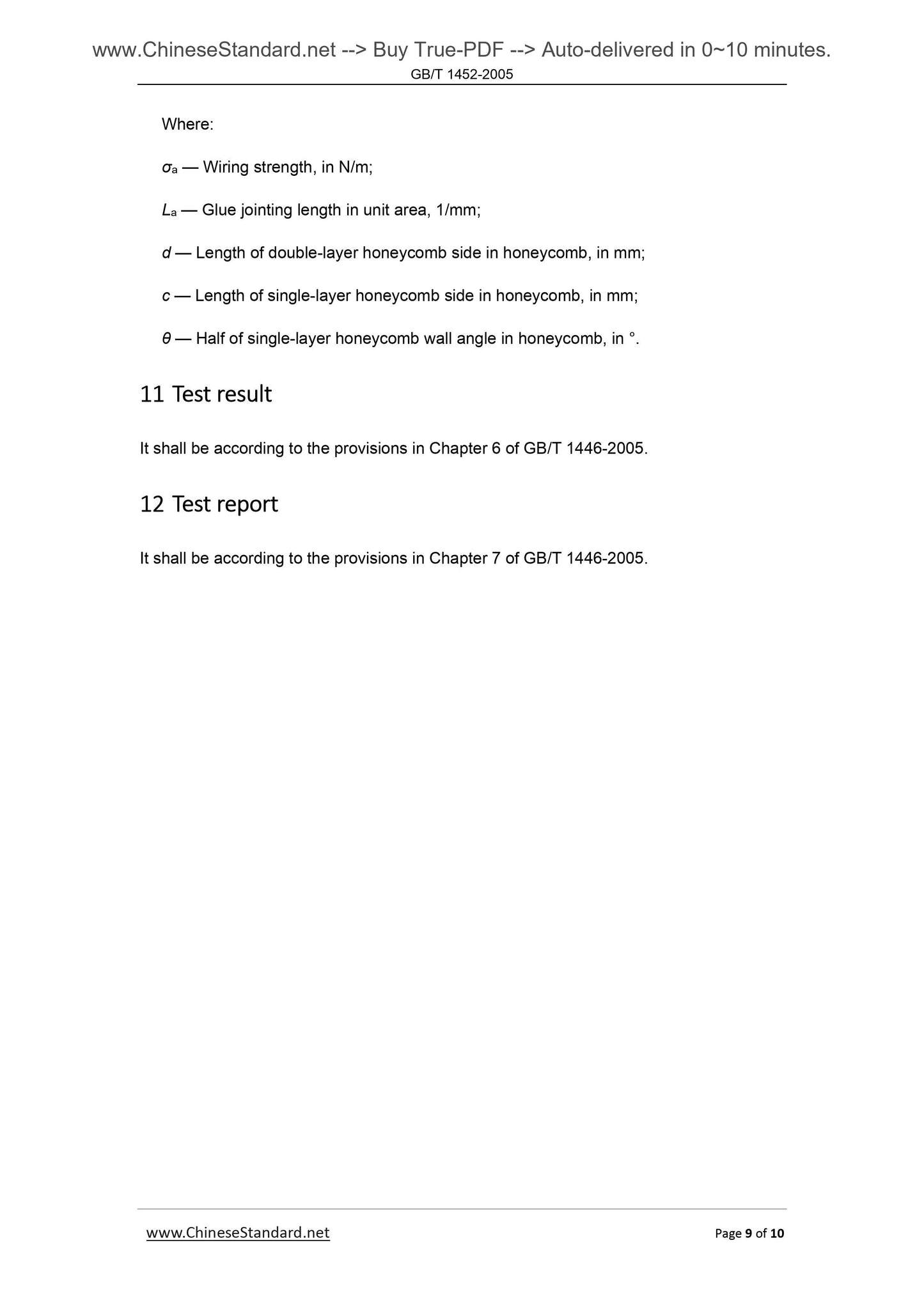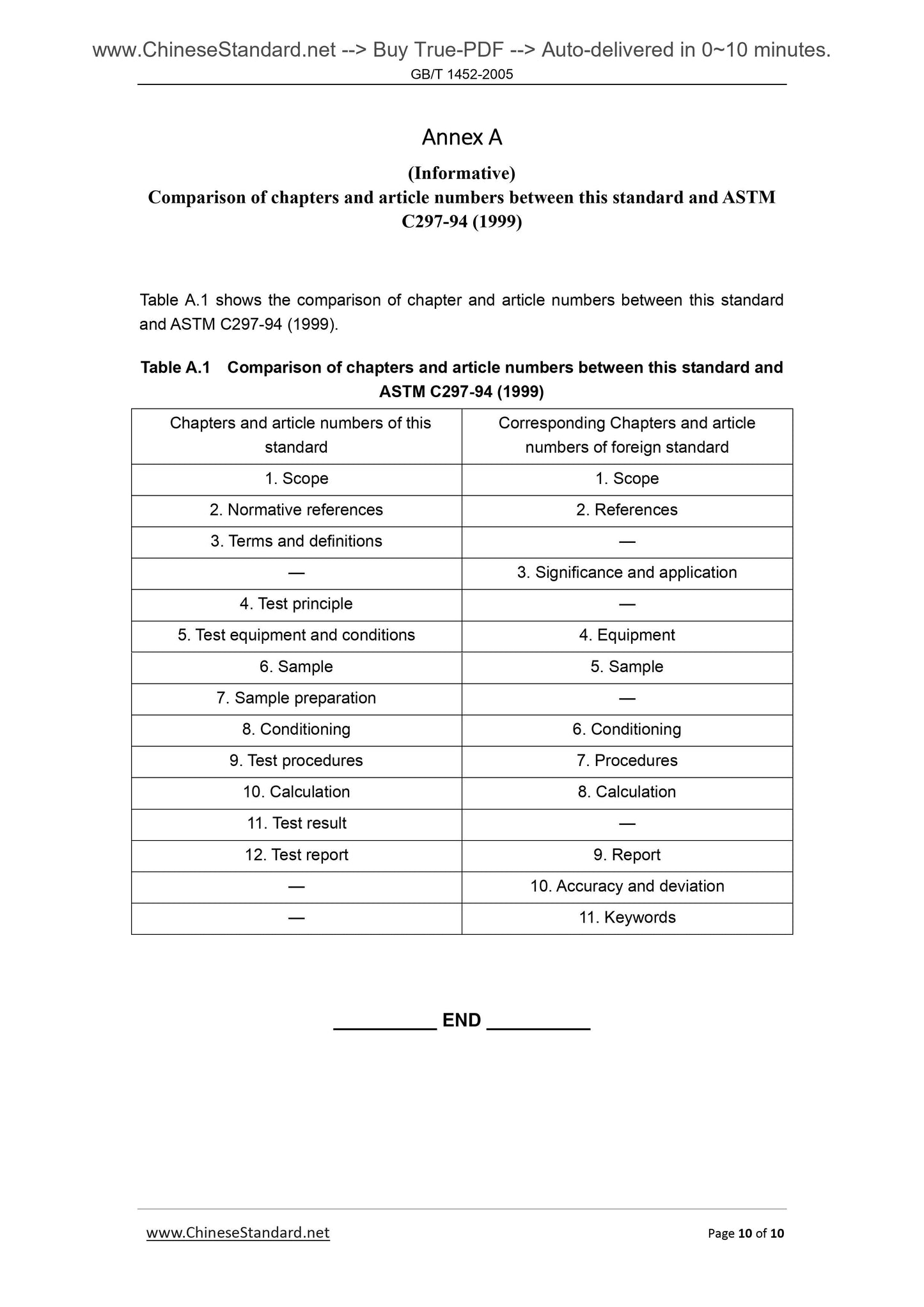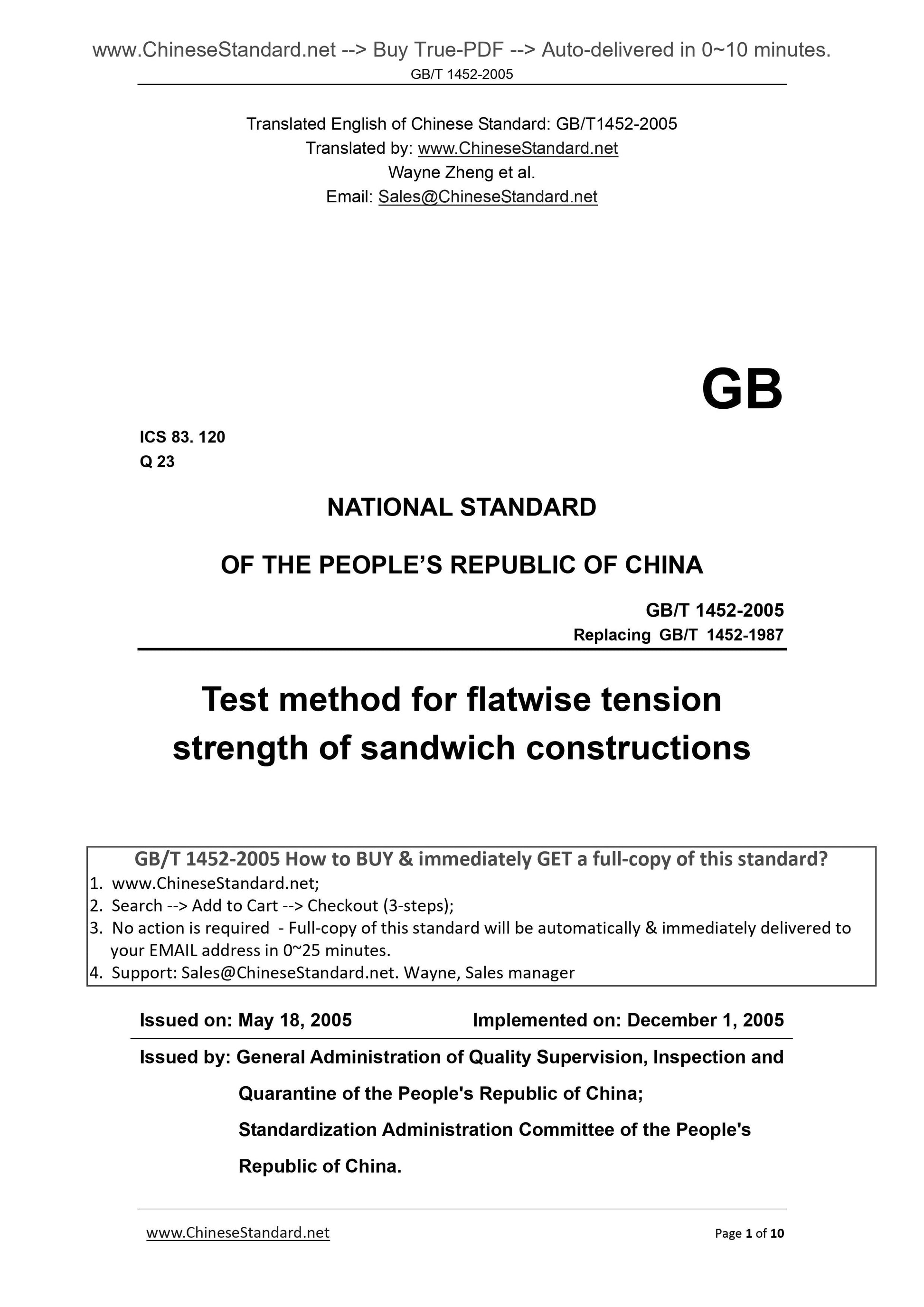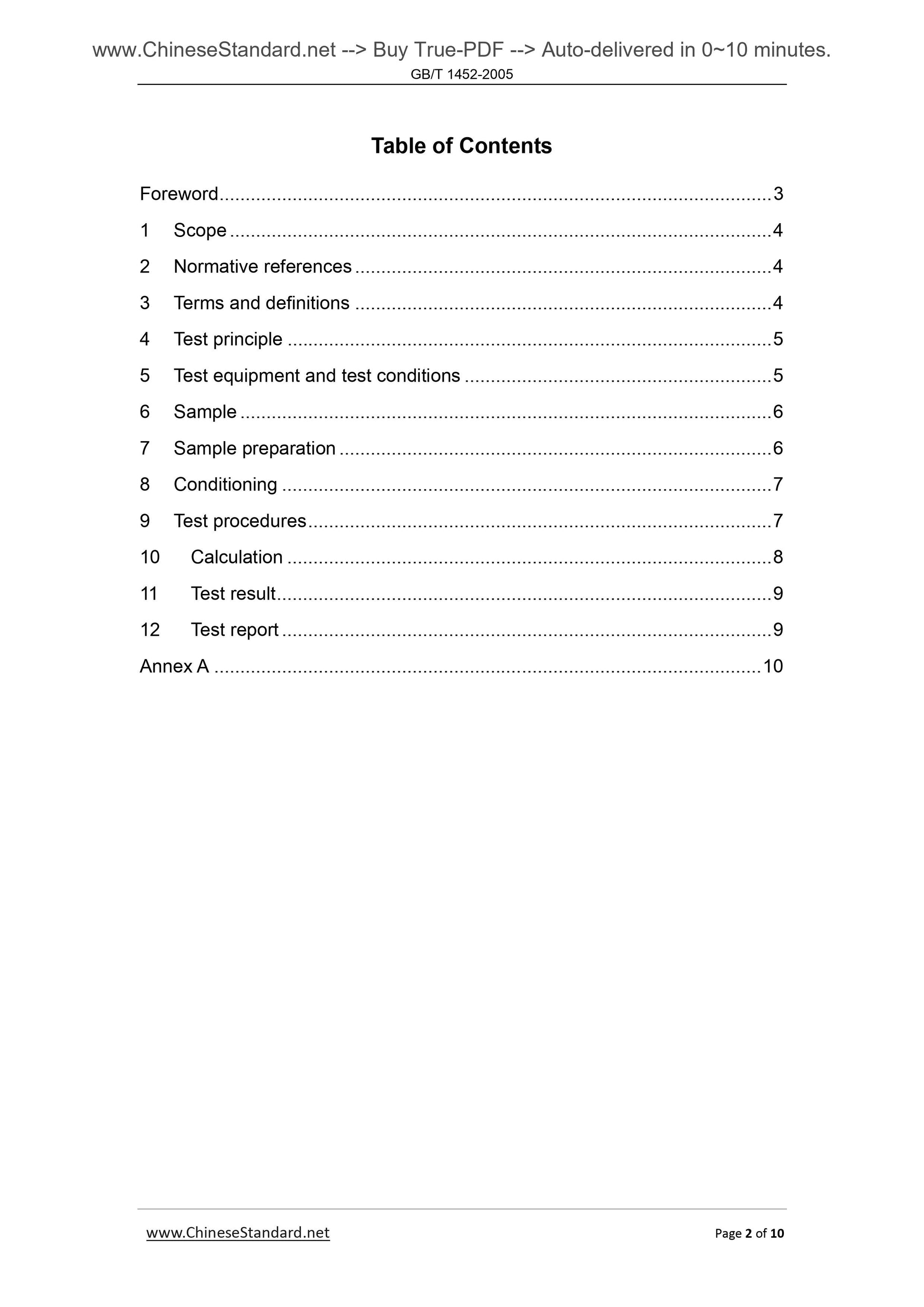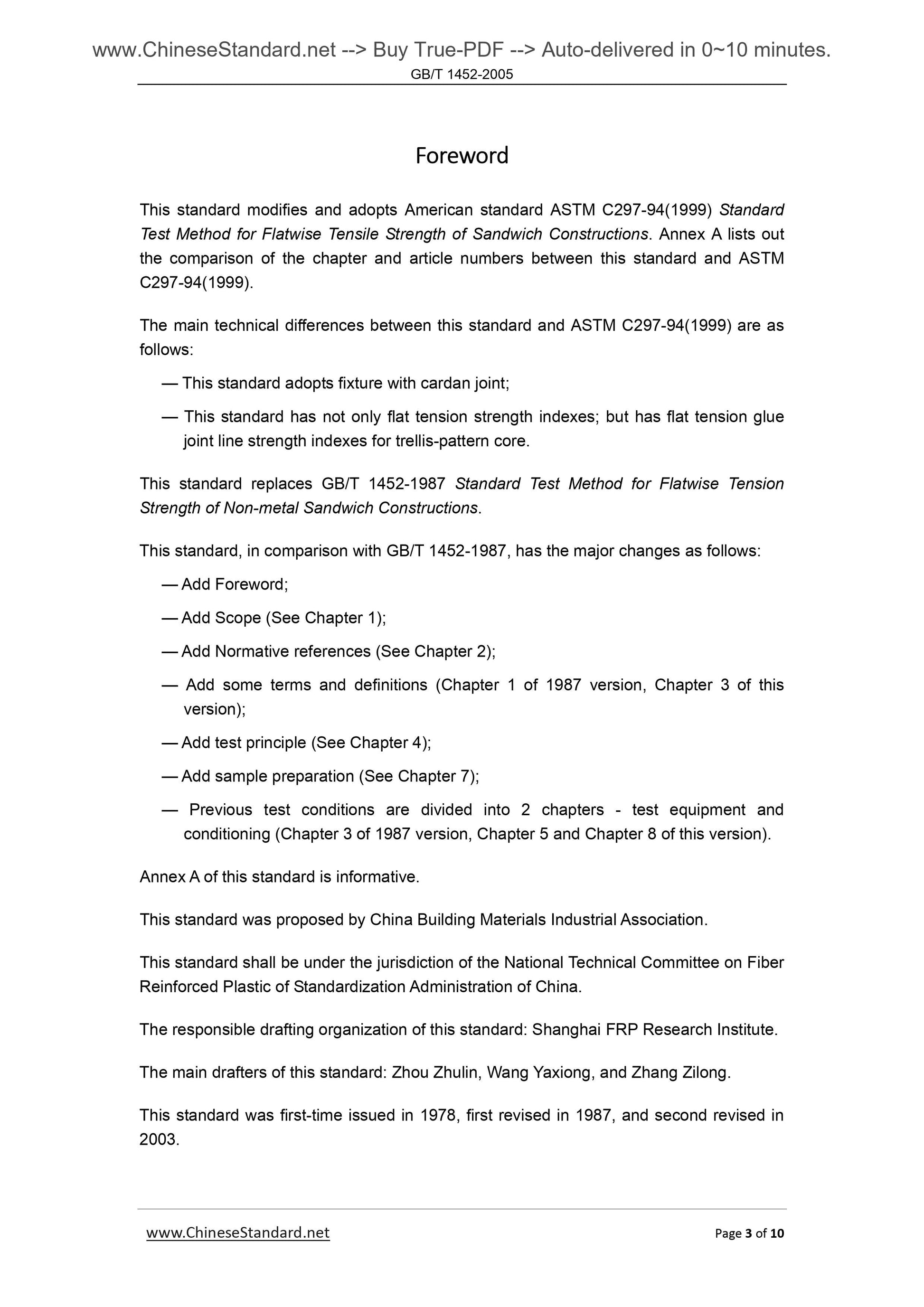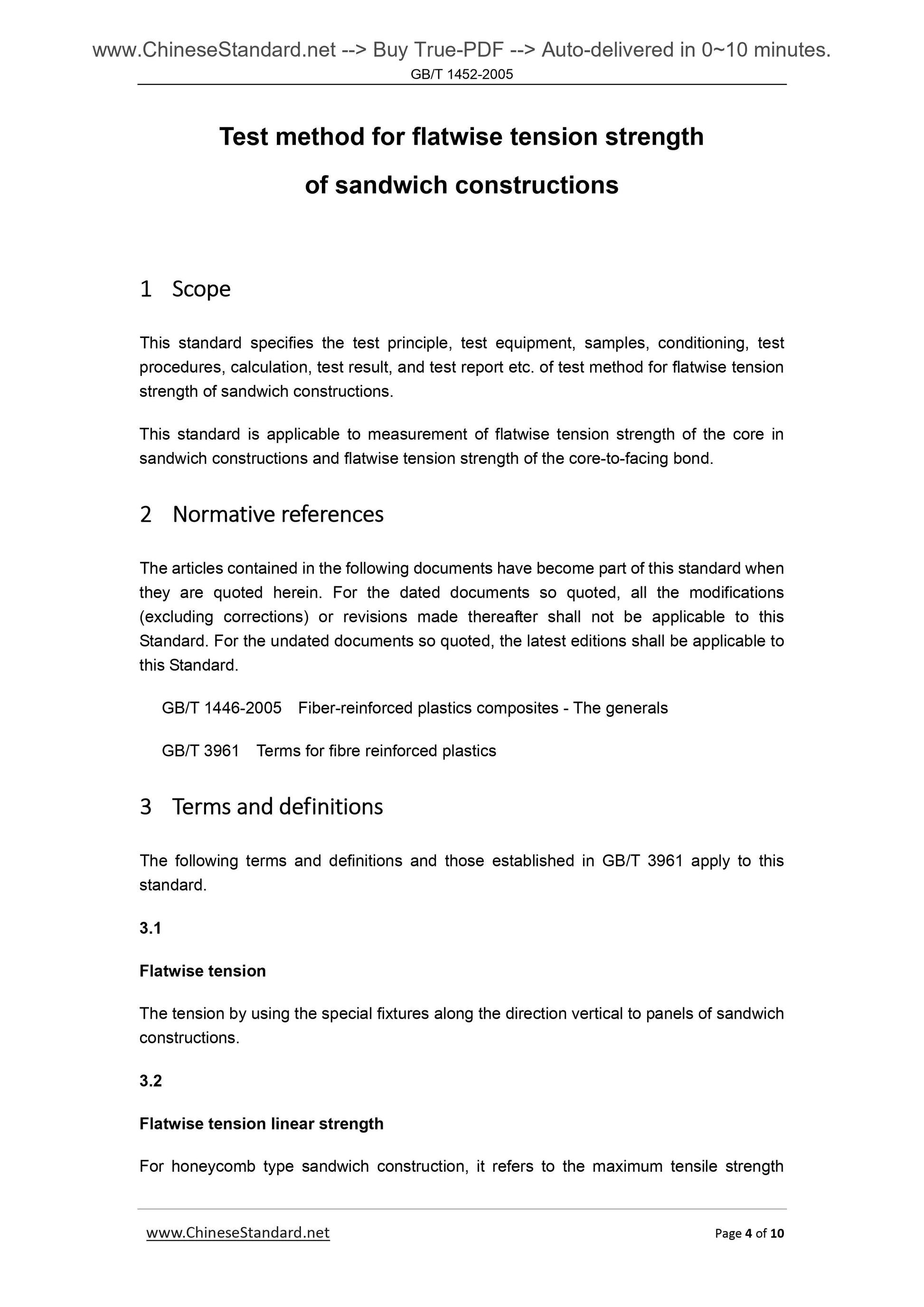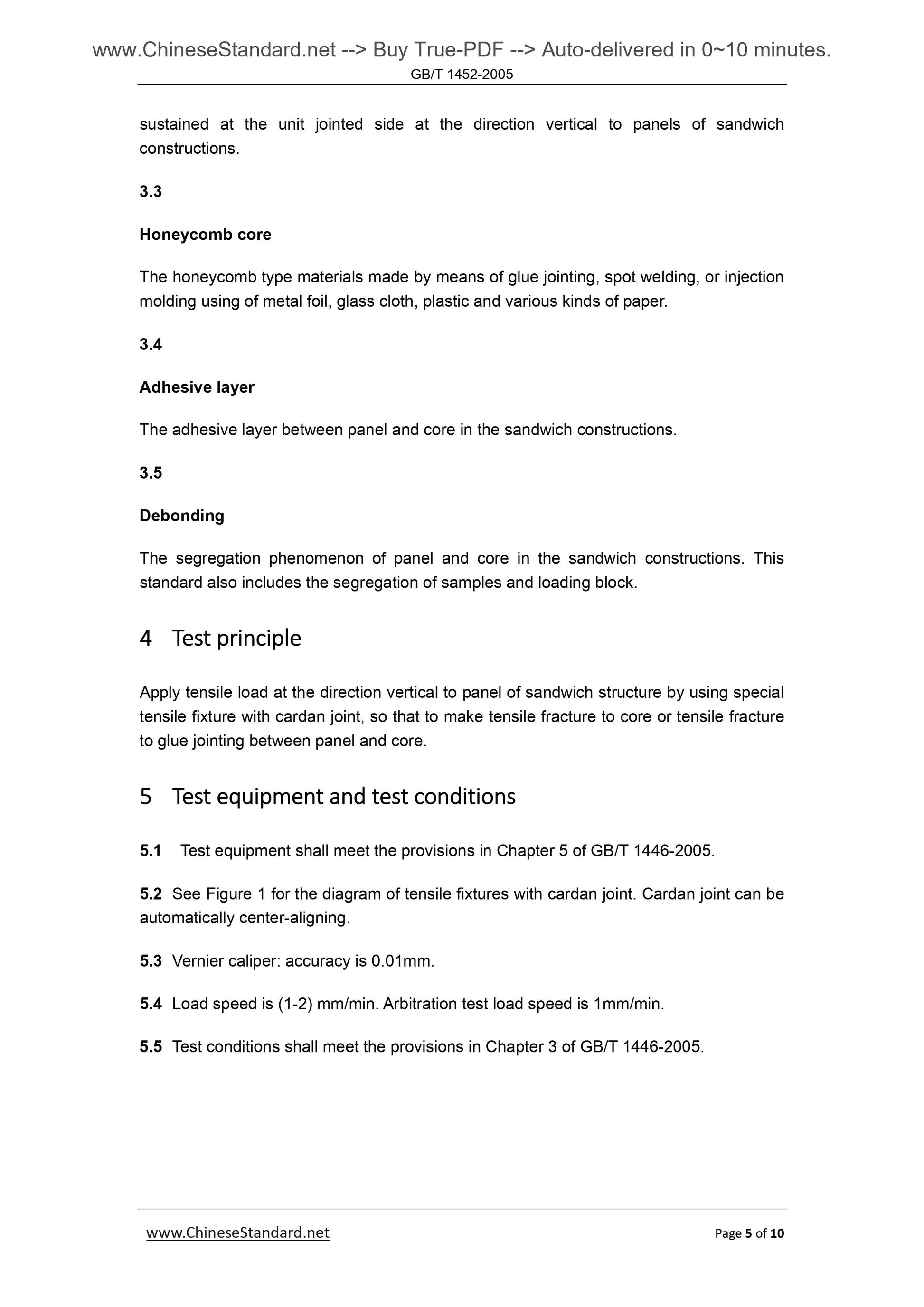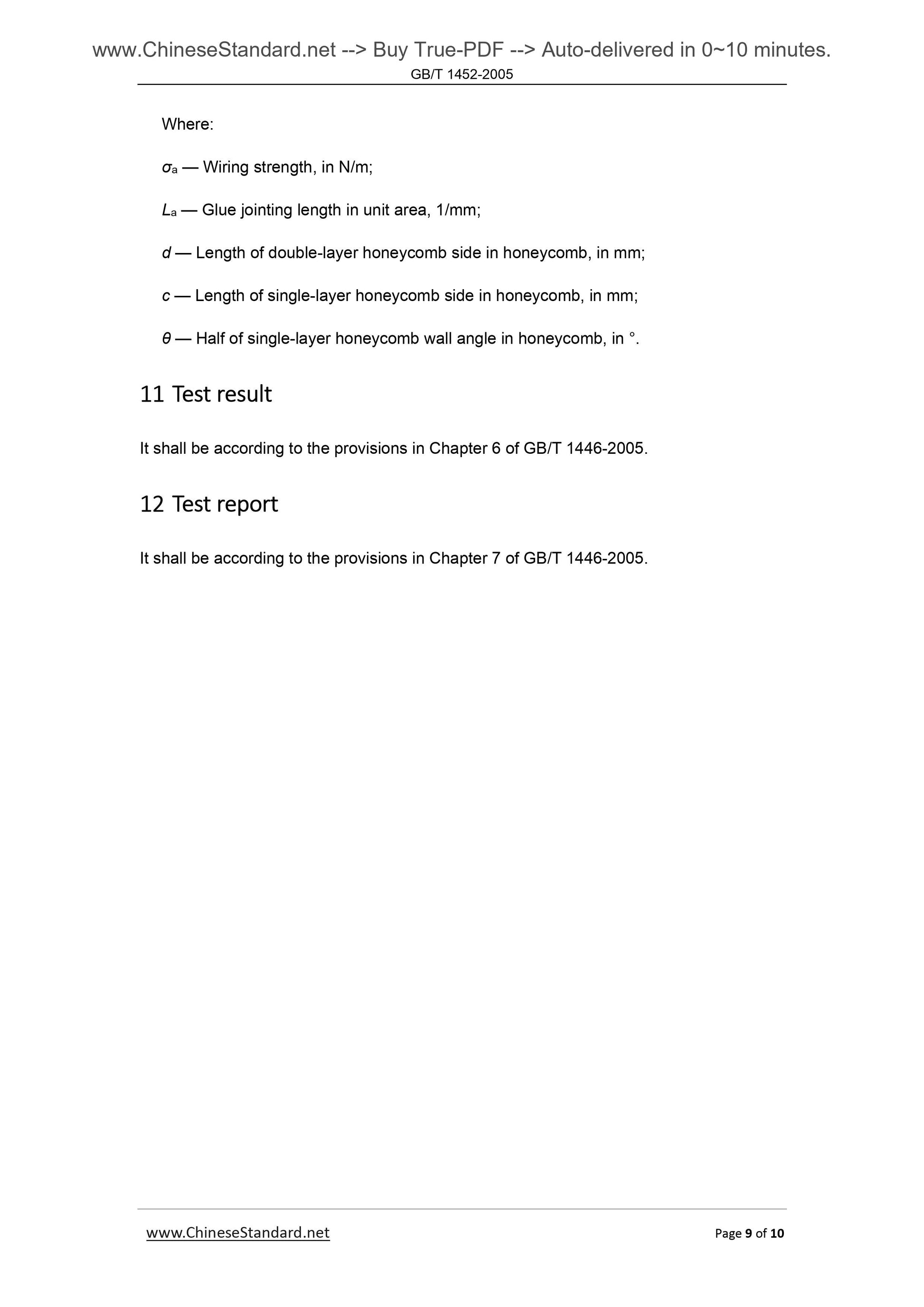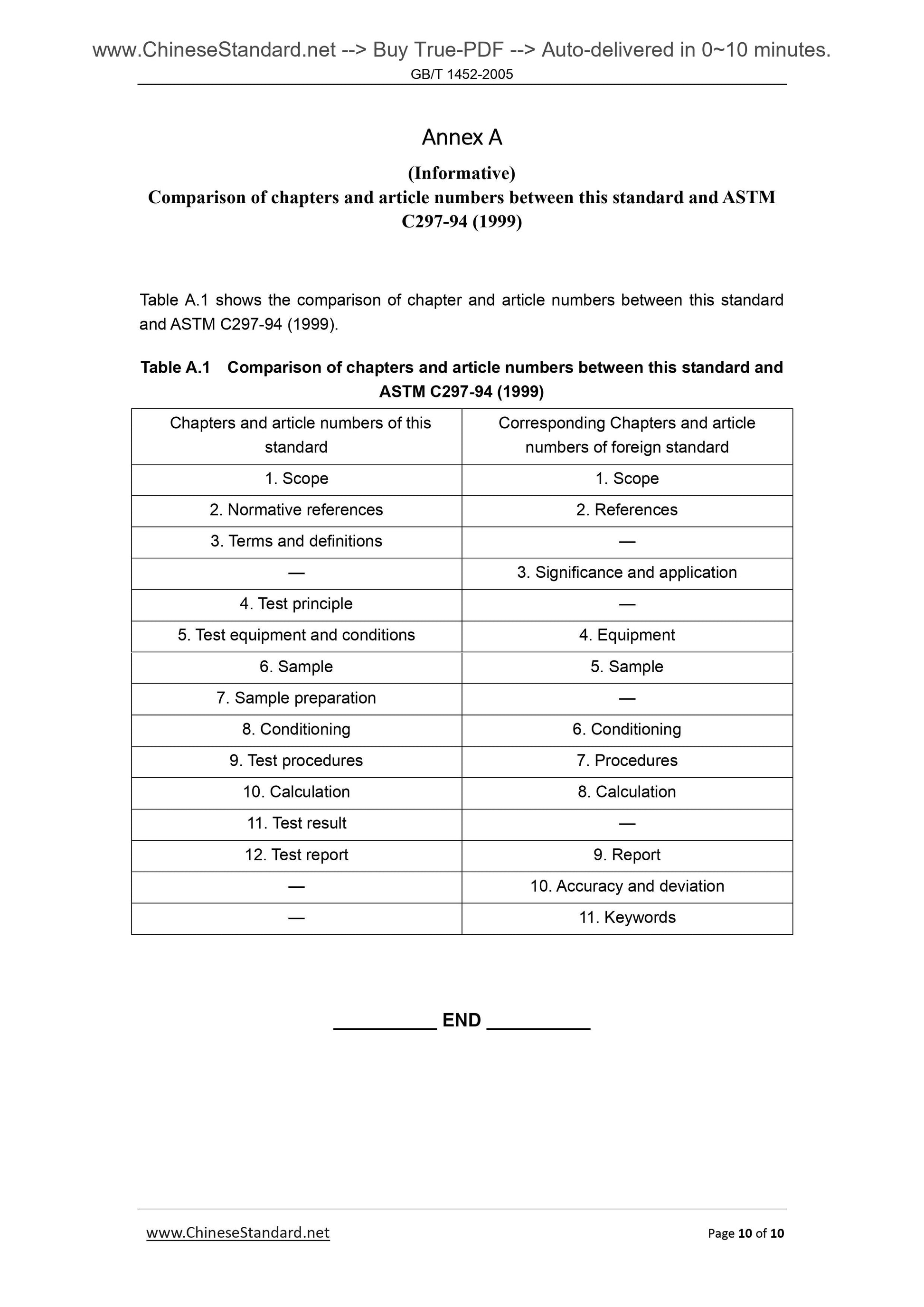1
/
of
7
PayPal, credit cards. Download editable-PDF and invoice in 1 second!
GB/T 1452-2005 English PDF (GB/T1452-2005)
GB/T 1452-2005 English PDF (GB/T1452-2005)
Regular price
$90.00
Regular price
Sale price
$90.00
Unit price
/
per
Shipping calculated at checkout.
Couldn't load pickup availability
GB/T 1452-2005: Test method for flatwise tension strength of sandwich constructions
Delivery: 9 seconds. Download (and Email) true-PDF + Invoice.Get Quotation: Click GB/T 1452-2005 (Self-service in 1-minute)
Newer / historical versions: GB/T 1452-2005
Preview True-PDF
Scope
This standard specifies the test principle, test equipment, samples, conditioning, testprocedures, calculation, test result, and test report etc. of test method for flatwise tension
strength of sandwich constructions.
This standard is applicable to measurement of flatwise tension strength of the core in
sandwich constructions and flatwise tension strength of the core-to-facing bond.
2 Normative references
The articles contained in the following documents have become part of this standard when
they are quoted herein. For the dated documents so quoted, all the modifications
(excluding corrections) or revisions made thereafter shall not be applicable to this
Standard. For the undated documents so quoted, the latest editions shall be applicable to
this Standard.
GB/T 1446-2005 Fiber-reinforced plastics composites - The generals
GB/T 3961 Terms for fibre reinforced plastics
3 Terms and definitions
The following terms and definitions and those established in GB/T 3961 apply to this
standard.
3.1
Flatwise tension
The tension by using the special fixtures along the direction vertical to panels of sandwich
constructions.
3.2
Flatwise tension linear strength
For honeycomb type sandwich construction, it refers to the maximum tensile strength
sustained at the unit jointed side at the direction vertical to panels of sandwich
constructions.
3.3
Honeycomb core
The honeycomb type materials made by means of glue jointing, spot welding, or injection
molding using of metal foil, glass cloth, plastic and various kinds of paper.
3.4
Adhesive layer
The adhesive layer between panel and core in the sandwich constructions.
3.5
Debonding
The segregation phenomenon of panel and core in the sandwich constructions. This
standard also includes the segregation of samples and loading block.
4 Test principle
Apply tensile load at the direction vertical to panel of sandwich structure by using special
tensile fixture with cardan joint, so that to make tensile fracture to core or tensile fracture
to glue jointing between panel and core.
5 Test equipment and test conditions
5.1 Test equipment shall meet the provisions in Chapter 5 of GB/T 1446-2005.
5.2 See Figure 1 for the diagram of tensile fixtures with cardan joint. Cardan joint can be
automatically center-aligning.
5.3 Vernier caliper. accuracy is 0.01mm.
5.4 Load speed is (1-2) mm/min. Arbitration test load speed is 1mm/min.
5.5 Test conditions shall meet the provisions in Chapter 3 of GB/T 1446-2005.
Where.
σa — Wiring strength, in N/m;
La — Glue jointing length in unit area, 1/mm;
d — Length of double-layer honeycomb side in honeycomb, in mm;
c — Length of single-layer honeycomb side in honeycomb, in mm;
θ — Half of single-layer honeycomb wall angle in honeycomb, in °.
11 Test result
It shall be according to the provisions in Chapter 6 of GB/T 1446-2005.
12 Test report
It shall be according to the provisions in Chapter 7 of GB/T 1446-2005.
Basic Data
| Standard ID | GB/T 1452-2005 (GB/T1452-2005) |
| Description (Translated English) | Test method for flatwise tension strength of sandwich constructions |
| Sector / Industry | National Standard (Recommended) |
| Classification of Chinese Standard | Q23 |
| Classification of International Standard | 83.120 |
| Word Count Estimation | 8,843 |
| Date of Issue | 2005-05-18 |
| Date of Implementation | 2005-12-01 |
| Older Standard (superseded by this standard) | GB/T 1452-1987 |
| Adopted Standard | ASTM C297-1994 (1999); MOD |
| Regulation (derived from) | Announcement of Newly Approved National Standards No. 8 of 2005 (No. 82 overall) |
| Issuing agency(ies) | General Administration of Quality Supervision, Inspection and Quarantine of the People Republic of China, China National Standardization Administration Committee |
| Summary | This standard specifies: strength test method sandwich Pull test theory, test equipment, sample conditioning, test procedures, calculations, test results and test report. This standard applies to: Determination of flat sandwich structure, tensile strength and core and core -glued panels Pull strength. |
Share
